A guide to the Caballito peso by date
by Allan Schein
The 1910 Un Peso Caballito is part of the series of Coinage Reform of 1905, when the motto ESTADOS UNIDOS MEXICANOS was added to coinage. The Caballito were struck from 1910-1914.
1910 Un Peso Caballito
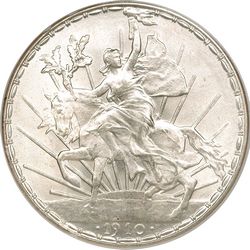
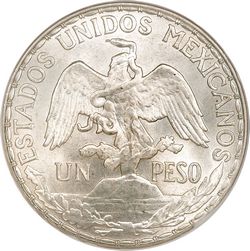
All 1910 pesos were struck from Type 1 dies, also known as the Short Ray variety. They were struck in Mexico City although none bear the Mo mintmark. These were designated Business (MS) strikes. Caballitos measure 39mm in diameter, are made of 0.9027% silver, 0.0973% copper and weigh 27.073gms. Each contains .7859 oz ASW. This first year of issue boasted the series largest annual mintage of 3,814,000 pesos.
The 1910 Caballito are all of the original “short ray” (rayo corto) design of Charles Pillet. This die variety has one shortened ray of the rising sun on the lower left side of the reverse. This shorter ray was a carryover from where the designer/engravers name appeared on the patterns. On the 1909 pattern, his name appeared in tall letters as “Ch. Pillet” laid out parallel to the rim on the lower left side. Pillet's name was removed from the dies for business strikes. Without further adjustments to the design, it left this one sun ray noticeably short.
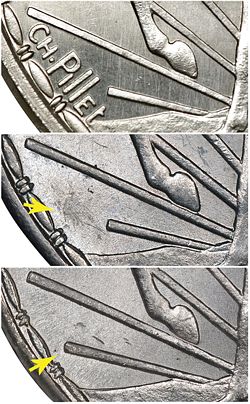
All 1910 and 1911 Type 1 Caballitos were struck with "short ray" dies. Although all Type 1 dies had the short ray, it is only their brief minting in early 1911 that is used to identify this variety. 1911 Short Rays are the only date in which the variety is scarce or designated. For differentiation, the 1911 Long Ray Type 2 dies also need designation. Only the 1911 Caballito uses "Ray" designations for variety. The scarcity is likely closer to that of the 1914 as a low population coin.
1911 Short Ray Caballito Peso

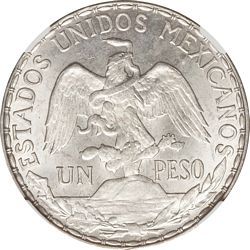
The 1911 Caballito Short Ray (Type 1) variety was struck for a brief time before new Type 2 dies were placed into service after having been adjusted to better strike details. The combined mintage for both Short and Long Ray varieties was 1,227,000.
The 1911 Caballito “short ray” (rayo corto) has one shortened ray of the rising sun on the lower left side of the reverse. This shorter ray was a carryover from where the Pillet's name appeared on the patterns. His name was removed from the dies without further adjustments to the suns ray, leaving one ray noticeably short. In early 1911 on the new Type 2 dies, Pillet lengthened the short ray for symmetry.
The new dies arrived in February of 1911 and were immediately placed into service producing the 1911 Long Ray variety, which showcased better overall detail as intended. The actual number of coins minted as short rays in 1911 is undetermined.
1911 Long Ray Caballito Peso
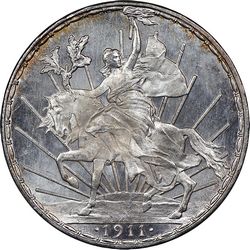
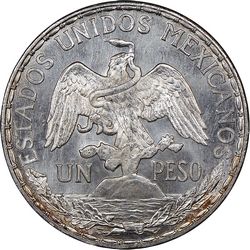
The 1911 Un Peso Caballito Long Ray (Type 2) variety accounted for the majority of coins produced in 1911. The new adjusted dies were placed in service in February 1911. Struck in Mexico City and designated as a Business (MS) strike, there were no changes to the technical specifications other than the design adjustments. This coin, like all Un Peso Caballitos is made of 0.9027 silver, 0.0973 copper and measures 39mm in diameter. It has a combined mintage for both Long and Short Ray types of 1,227,000.
The 1911 Caballito “long ray” (rayo largo) type die had the formerly short ray extended for balance. This lengthened ray now filled the space where Pillet's name originally appeared on the patterns. Pillet lengthened the ray for symmetry.
Additionally, the adjustments included enhancing the entire relief with greater detail. The improvements become obvious when examining the two types side by side. 1911-LR Caballitos are more frequently seen with proof-like (PL) surfaces than other dates.
1912 Un Peso Caballito
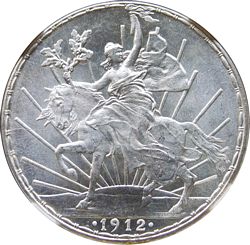
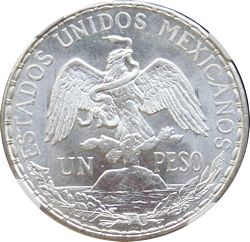
The 1912 Caballito, a Type 2 die set, was struck in Mexico City and designated as a Business (MS) strike. Caballitos were struck on 39mm planchette made of 0.9027 silver, 0.0973 copper. It had a mintage of 322,000.
1912 Caballitos are some of the most lustrous available. The cartwheel in higher grades can be truly dazzling. Considered a semi-key date because of the low mintage, they consistently bring higher prices than more available dates.
With the Casa de Moneda originally being authorized to strike 1,000,000 in 1912, the 322,000 minted fell well short of the goal. As a result, dies already prepared but unused were over-struck with the numeral 3 for use the following year. This accounts for the wide variety of 1913/2 over-dates.
1913/2 Un Peso Caballito
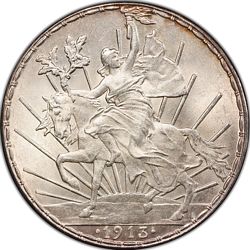
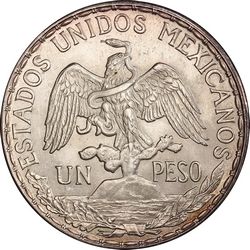
The 1913/2 Caballito (Type 2) has numerous varieties struck from unused dies previously prepared for the 1912 issue that were over-struck with the numeral 3. The date adjusted 3/2 dies used for 1913 production were minted in Mexico City and designated as a Business (MS) strike. The Caballito Peso is made of 0.9027 silver (often referred to as "Mexican Silver" for the higher silver content), and 0.0973 copper. It has a mintage of 2,880,000 combining all varieties.
1913/2 Caballitos have been identified with at least five different varieties. Both PCGS and NGC attribute the Schein 3/2 date varieties.

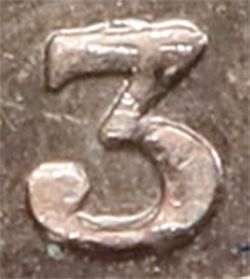
1913 Un Peso Caballito

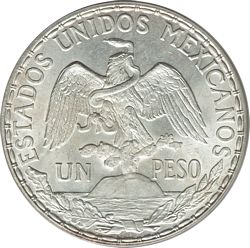
The 1913 Caballito Peso, a Type 2 die set, has the second highest mintage for the series and is the most available date in uncirculated grades. The Caballito was a heavily used coin in its first years. This is illustrated by the low number of uncirculated coins found dated 1910, the series' single highest mintage year.. The 1913 has a mintage of 2,880,000.
1913 Caballitos are some of the highest graded available. No other date boasts even a single coin graded MS-67. The 1913 to date has four coins graded MS-67 at NGC and seven at PCGS. Gem grades can usually be found, but Choice Gems are elusive.
1914 Un Peso Caballito
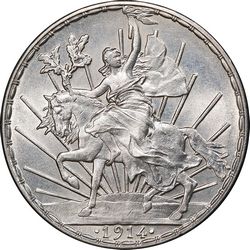
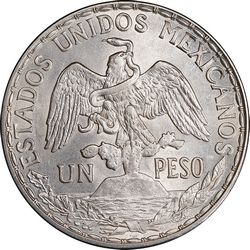
The 1914 Caballito is the last coin of this five year series. The date has the lowest mintage for the series and is rarely found in uncirculated grades. The 1914 has the smallest mintage of the series at 120,000.
The 1914 Caballitos are considered the key to the series.
1914 Caballitos are some of the scarcest to find. With a low mintage comes a low population of graded examples. The 1914 population consists of just a single coin in MS-64 at both NGC and PCGS. It is not unusual to find a "Catorce" with an altered date, technically making it a counterfeit. Often a numeral 4 is transferred from another coin and placed in last position on a genuine common dated Caballito. If you ever find a short ray 1914, it is a fake. Additionally, any Caballito with a reeded edge is also a counterfeit.
